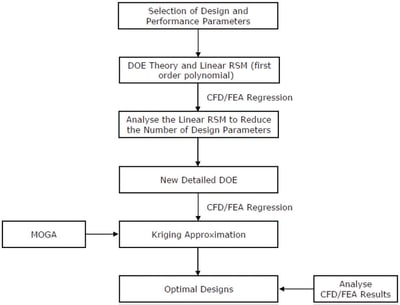The radial and mixed-inflow turbines have been widely used for the turbocharger application. The design of a turbocharger turbine with good performance still presents a lot of challenges.
Apart from the traditional requirements such as high efficiency and low stress, the turbine blade is also required to achieve certain performance targets at multiple operating points, high unsteady efficiency under pulsating flow condition, reduced moment of inertia (MOI) and high vibration characteristic. To meet these challenges, it is important to optimize the radial and mixed-inflow turbines for the aerodynamic performance at multiple operating points and the structural performance subject to MOI, stress and vibration constraints.
In this paper we propose an approach based on 3D inverse design method that makes such a design optimization strategy possible under industrial timescales. Using the inverse design method, the turbine blade geometry is computed iteratively based on the prescribed blade loading distribution.

The radial filament blading is always applied by the conventional design method to reduce the stress, while the inverse designed blade is three-dimensional (3D). A radial filament modification method is proposed to control the stress level of 3D blades. The turbine’s aerodynamic and mechanical performance is evaluated using CFD (5 operating points) and Finite Element Analysis (FEA). A linear regression is performed based on the results of the linear DOE study. The number of design parameters is reduced based on a sensitivity analysis of the linear polynomial coefficients. A more detailed DOE with around 60 designs is generated and Kriging is used to construct a response surface model (RSM). Multi-objective genetic algorithm (MOGA) is then used to search the optimal designs which meet multiple constraints and objectives on the Kriging response surface.
The performance of the final optimal design is evaluated in both the aerodynamic and mechanical aspects based on CFD and FEA simulations. The numerical results show that the optimal design leads to better performance in almost all aspects including improved efficiency in the design point and high U/Cis (velocity ratio), similar maximum stress, reduced MOI and increased vibration frequencies.
Mehrdad Zangeneh
Mehrdad Zangeneh is Founder and Managing Director of Advanced Design Technology and professor of Thermofluids at University College London.
View All Articles






Share This Post